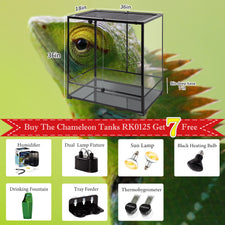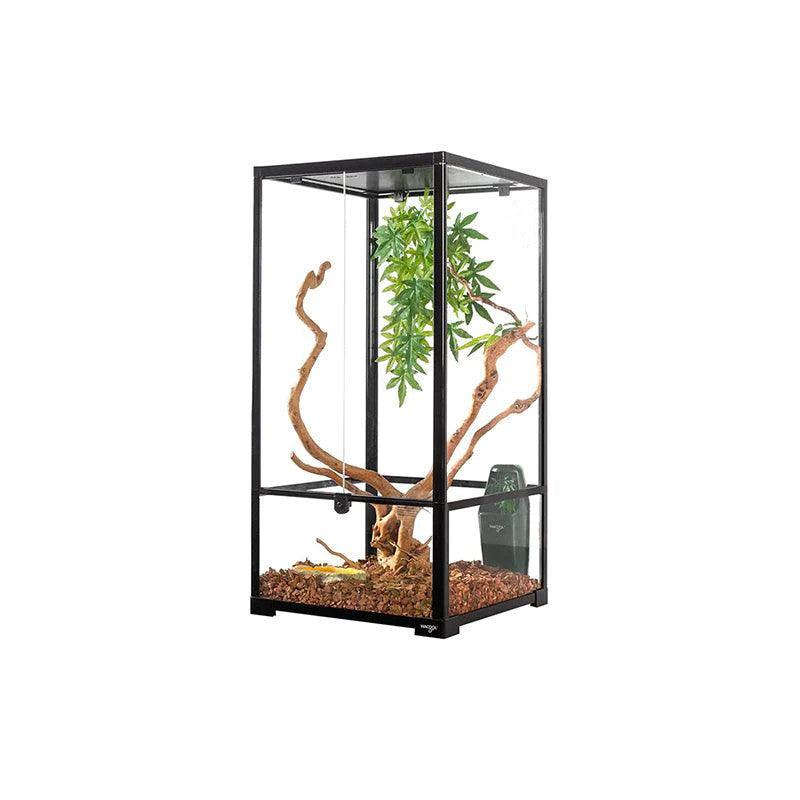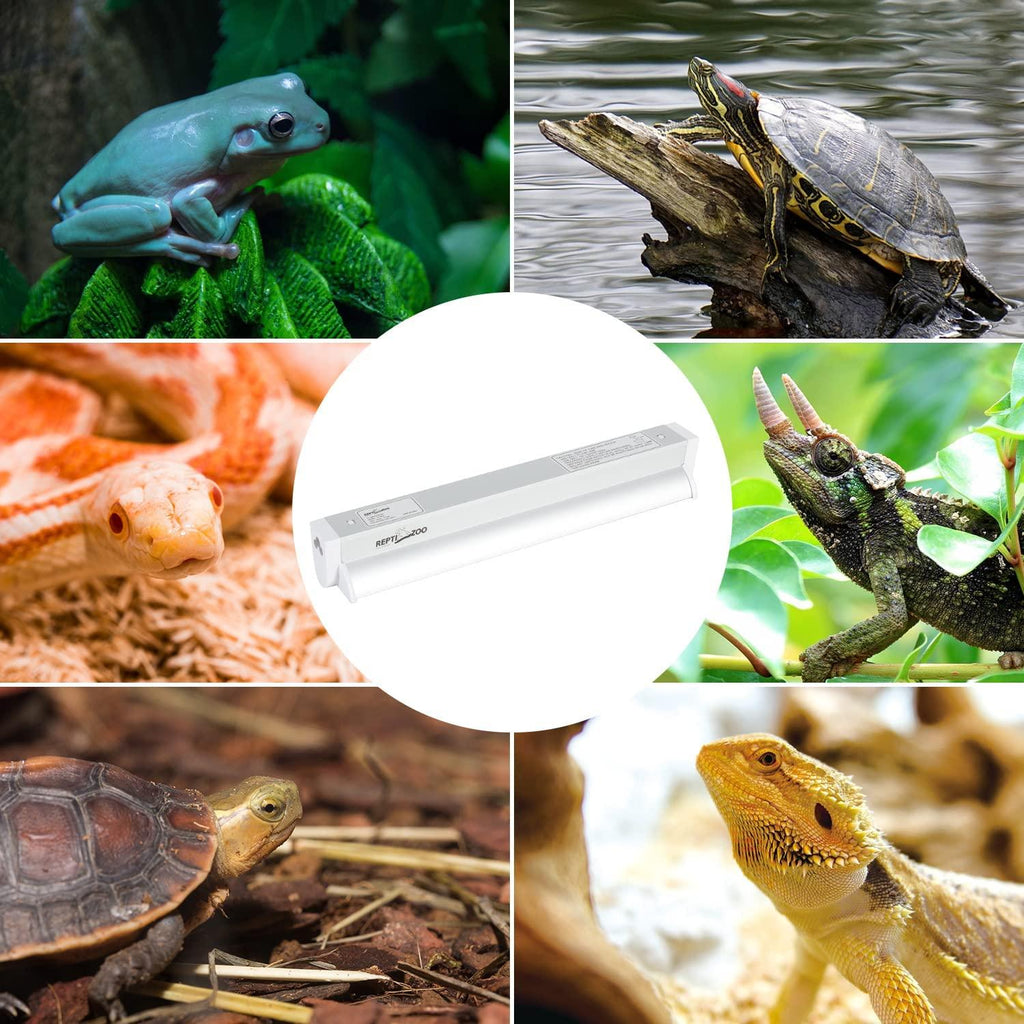Frilled lizard as pets are simply awesome! They bring true meaning and add colors to our dull lives. Regardless of who your pet is, you are accountable for making their life happy and comfortable, ensuring their proper growth and development.
A special class of amazing pets are the reptiles or amphibians. They need extra care and warmth but are truly adorable and amiable creatures. One such example is the - frilled-neck lizards or frilled lizards.
Native to the forests of Australia and New Guinea, these creatures make great pets, imparting an essence and energy to your life.
If you intend to buy or adopt a frilled lizard, this page is just for you. Read on to delve into the various characteristics, behaviors, housing needs, humidity, heating and lighting requirements, common health problems, diet and feeding guidelines, and more concerning frilled lizards.
Frilled Lizard - Care Sheet - For Starters
Having pets is great. And knowing everything about them – their characteristics, behaviors, food preferences, health issues, and more – makes sense before bringing them home. This knowledge comes in handy in taking good care of them, ensuring they receive everything needed for their growth besides your love and warmth.
Characteristics of Frilled Dragon
They have a titular frill.
These creatures are known as frilled-neck lizards or frilled dragons because of the titular frill or collar that makes them distinct.
They are extremely active.
Frilled lizards are hyperactive and curious creatures who love climbing, running along the branches, and perching on the trees. They are full of energy and life.
They grow moderately in size.
Frilled lizards grow up to 2 feet; some adults maybe 4 feet long. Males are longer and larger than females.
They are docile and harmless creatures.
They are usually kind and calm animals who get aggressive only when they are fighting for a mate. They are not dangerous.
They have a good lifespan.
Usually, these creatures live for 10-15 years and grow into adults after 2 years. In the wild frilled lizards, the life span is about 5 years as they are often the prey to larger reptiles, wild dogs, and more.

Guidelines For Ensuring The Best Possible Growth And Development Of Your Reptile Pet - Frilled Lizard
Housing Needs
While some people call frilled lizards a dragon due to their bearded appearance, in reality, their behaviors are quite similar to those of chameleons in terms of living conditions. That said, they are arboreal and enjoy climbing. This requires you to go for a vertical reptile enclosure as their habitat offers a lot of vines and branches to keep them active by running and climbing all over.
A good idea is to have terrarium plants and other decor that enables climbing. Offer as much space as possible for them to move around. Concerning their growth, adult frilled lizards would require a 4-foot enclosure to stay comfortable. You need at least a 20-gallon tank to make them feel at home.
Lighting Needs
Frilled lizards are diurnal creatures that remain active mainly during the daytime. Besides, they need UVB lighting to regulate their body temperatures and get the required quantities of vitamins.
Usually, they need 10% of UVB for 12 hours a day, and that’s essential to their growth. While planning a terrarium, make sure to include both a well-lit and a shadier area. Frilled lizards tend to keep shifting to places with different temperatures, so it’s also recommended to have some shadier spaces. After all, your pet can’t be in the sun all day!
At night, all lights must be switched off. They need to get enough sleep. Going for 14-16 hours of light in summer and 12-14 hours in winter is advisable.
Another good idea is to seek the T8 and T5 UVB bulbs, which help maintain a certain temperature gradient in the enclosure. They are relatively cheaper and don’t need to be replaced often.
Temperature Requirements
Another critical parameter for the proper growth and sound health of frilled lizards is the appropriate temperature in the enclosure for basking. They thrive well in hot climates, so maintain a temperature of 100°F all day.
While you may create some shady areas in the habitat, the temperature on the hotter side must be higher so your frilled pet can bask.
For the relatively warmer side, you can keep the temperature between 85-90°F. To ensure that the nighttime temperature doesn’t fall below 80°F. To keep the temperature up, you may use a ceramic bulb.
Humidity Requirements
As frilled lizards are natives of the forests of Australia, they require a high level of humidity. Ideally, you must maintain 70% humidity in your pet’s habitat.
Check out some tips to maintain good humidity in the enclosure.
- Use a hygrometer to track and monitor the humidity level
- Deploy a reptile mister to spread and create a cool atmosphere. Alternatively, you may manually mist the enclosure at regular intervals.
- Maintain a closed terrarium with no mesh lids.
- Grow foliage and other plants in the terrarium to maintain cool and pleasant surroundings.
Substrate
As frilled lizards rarely spend time on the ground, substrate must not be a concern for you. However, you must still use a substrate that doesn’t annoy your pet. Some examples of lizard-friendly substrates are -
- Organic Potting Mix
- Zilla Jungle Mix
- Peat Moss
- Cypress Mulch
Remember that substrates left unattended can result in severe mold formation in the enclosure. In addition, it could lead to the development of spores, which cause respiratory illnesses in frilled lizards. That’s why it is imperative to clean the tank regularly.
Diet and Feeding Guidelines
Diet is the most important aspect to consider for the well-developed growth of any creature. Frilled lizards are considered omnivorous; however, they prefer having meat and insects rather than fruits, vegetables, or anything green.
Frilled lizards in forests hunt spiders, ants, termites, and insects. To your frilled pet, you can feed black crickets, dubia roaches, and locusts as a part of their daily diet. Sporadically, you can treat them with mealworms, silkworms, earthworms, or pinkies.
Feeding Guidelines
- All these food items are high in fat content; feed them to your frilled lizard only once or twice a week.
- Sometimes, you may try feeding them with green leafy vegetables like spinach. However, they would not prefer it.
- Ensure that whatever you feed is smaller in size than the distance between their eyes. Otherwise, they may face difficulty digesting, which could pose serious health problems.
- Feed them regularly in small intervals. This would let them easily digest the food while maintaining a good body weight.
- Juvenile frilled lizards must be fed with proper-sized insects. The size must not ideally exceed two-thirds of the width of the lizard’s head. They must be fed up to three times a day.
- Adult frilled lizards must be fed once a day or every two days. Do include a dusting of some Calcium and D3 supplements in their meal at every feeding.
- Mist the enclosure well because frilled lizards drink water droplets. A shallow vessel with water may go unnoticed, so use a pump sprayer or misting system to create a rain effect.
Common Health Problems And Related Treatment
You must be aware of the common health issues faced by frilled lizards and the relevant treatment so that you can take proper care of your reptile pet.
Respiratory Problems
Symptoms: Wheezing, sneezing, breathing difficulties
Cause: Unclean environment or dust and dirt in the enclosure
Treatment: Consult a vet.
Prevention: Keep your pet’s habitat clean and dry. Disinfect the surfaces it comes in contact with.
Gastrointestinal Problems
Symptoms: Loss in weight, vomiting, digestion issues
Cause: parasites, stress
Treatment: Take it to a vet.
Prevention: Feed your pet properly - neither less nor in excess. Be careful about the frequency of feeding.
Skin Problems
Symptoms: Scratching the skin, redness or swelling
Cause: infections, shedding issues, mites
Treatment: Consult a vet.
Prevention: Keep your pet and its surroundings clean.
Egg-Binding
Symptoms: Female frilled lizards feel strained in egg-laying.
Cause: Lack of calcium in their diet
Treatment: Consult a vet if they find egg-laying stressful or stop laying eggs.
Prevention: Include the right amounts of calcium supplements in the diet of gravid (pregnant) females.
Guidelines For Avoiding Your Pet’s Health Problems
- Clean your pet’s enclosure once every few days with a reptile-safe disinfectant and change the substrate.
- Don’t use sand for substrates; it causes infection by affecting your frilled lizard’s eyes.
- Monitor the temperature, lighting, and humidity conditions in your pet’s enclosure periodically. Don’t let them fall below or exceed the prescribed ranges.
- Check the medical condition of your frilled lizard regularly and reach out to a vet in case anything causes concern.
Wrapping Up
Frilled lizards are more than just a pet if you are serious about adopting one.
We hope this care sheet gives you all the information you must know to take the best care of your new reptile friend. Adhere to the guidelines outlined in the article; all that’s needed is a little time for your cute frillie pet to settle in.
Lots of fun, enthusiastic moments and value to your life - are what follow!











